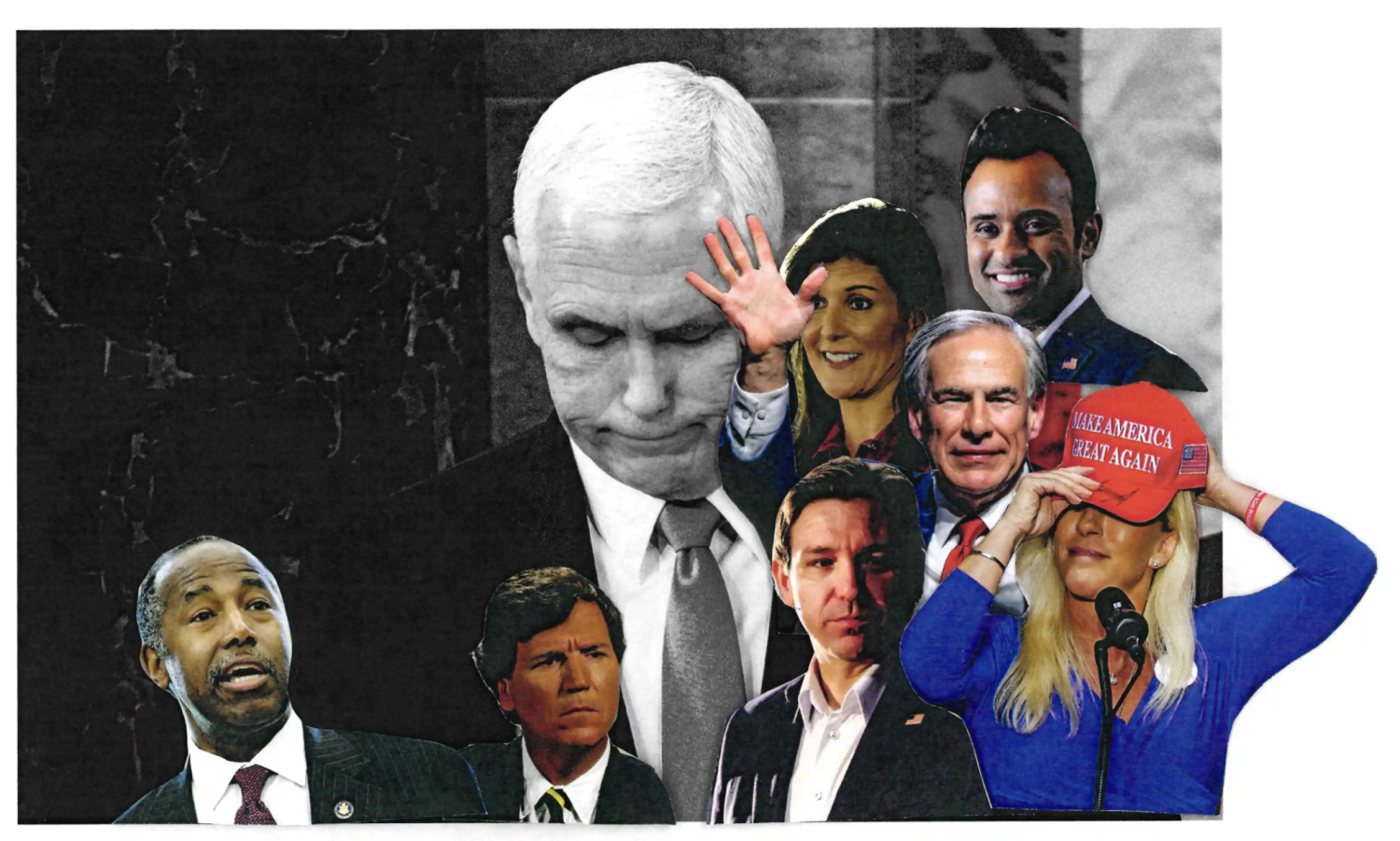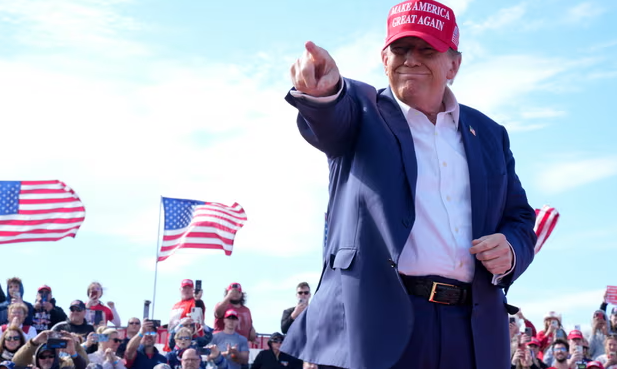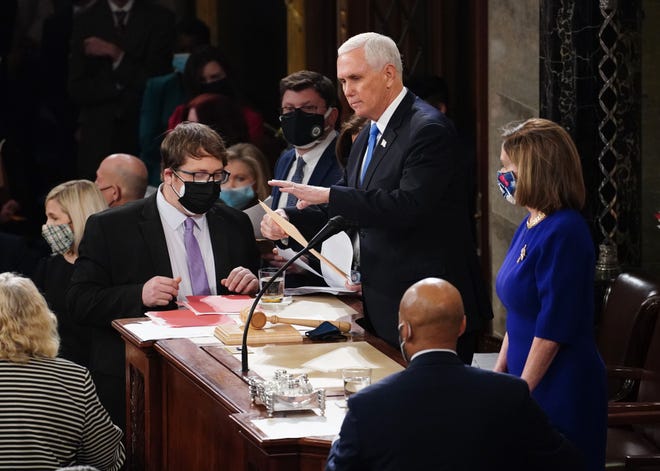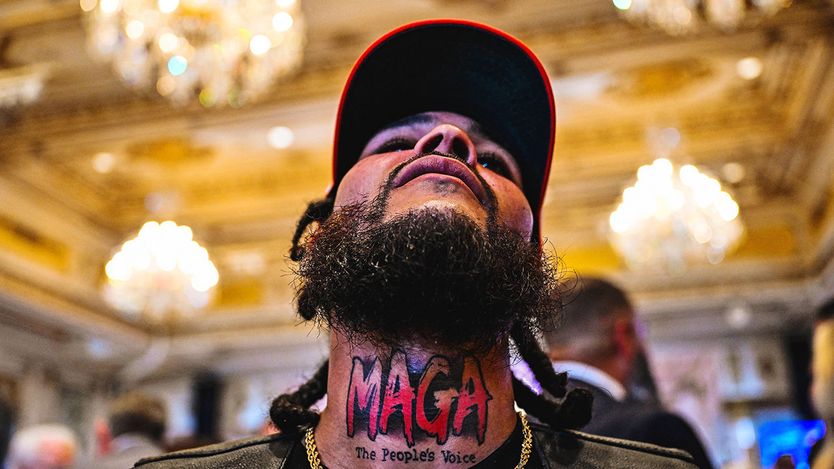This article is more than
8 year oldPolls favourable to Donald Trump may be overestimating his support, state polls suggest
Depending on which presidential candidate you favour, American polls have something to appeal to all tastes. A competitive race? A narrow lead for Donald Trump? A landslide for Hillary Clinton? The polls have you covered.
But that doesn't mean that we have no idea where things really stand in the U.S. election. The consensus of national polling still points to a comfortable Clinton lead — and that lead is corroborated by state-level polling that also heavily favours her.
- Focused on winning seats, Clinton and Democrats looking past Trump
- Presidential Poll Tracker: Check out the latest projections
A number of daily tracking polls have emerged in recent days showing much more positive numbers for Trump than other surveys. On Monday, the USC/Los Angeles Times poll put Clinton up by a single point. The much-vaunted IBD/TIPP poll had the two candidates in a tie.Rasmussen Reports, meanwhile, had Trump ahead by two.
These tracking polls, however, will now vie with one from ABC News. On the weekend, this tracking poll put Clinton up by 12.
While that kind of lead is on the larger side, on average, the sum total of national polls agrees that Clinton is ahead. The Presidential Poll Tracker has Clinton at 47.1 per cent to Trump's 42.9 per cent — a lead of just over four points among decided voters.
But this is the average of national polls, which include these new daily tracking polls. State-level polling suggests the influence of these tracking polls may be misleadingly boosting Trump in national averages.
State polling worse for Trump
State-level projections are based partly on national polls but primarily on surveys done specifically in individual states. Taking the weight of the national polls out of the state projections makes it possible to look entirely at state-level polling — and use those state projections to calculate national levels of support.
The state polling is persuasive. In polls conducted at least partly in October, 22 national pollsters have surveyed about 125,000 decided voters. At the state-level, however, 67 different pollsters have interviewed about 190,000 decided voters. A bigger sample, but also a more varied set of methodologies and sources.
Based on these state polls only, and weighting the projections in each state according to its share of the American population, Clinton's national support stands at 49.5 per cent to Trump's 43 per cent.
That lead for Clinton is 6.5 points — more than two points wider than the average of national polls. Trump's national numbers do not change when looking just at the state polls, but support for third-party candidates is 2.6 points lower in the state polls than it is nationwide.

Weighting each state by 2012's presidential election turnout makes no substantive difference; in fact, it increases Clinton's margin by a few tenths of a percentage point.
This is a strong indication that the tracking polls showing the race as tied or narrowly leaning toward Trump are off the mark. Those polls giving Clinton a lead of around six to seven points are likely gauging the race correctly. The 12-point lead awarded to Clinton by the ABC News poll may be an outlier, just like the IBD/TIPP poll.
Simply put, the state polls would be looking much better for the Republican nominee if he was keeping the race competitive. Instead, Trump is trailing badly in key swing states like Colorado, New Hampshire, Pennsylvania and Virginia, and is consistently behind in must-win states like Florida and North Carolina. His leads in Arizona and Georgia are thin.
That would not be happening if Trump and Clinton were truly neck-and-neck nationwide.
Methodological explanations?
Methodology may be partially behind the unusual results in the tracking polls.
Rasmussen uses an automated telephone survey (also known as interactive voice response). In the United States, unlike in Canada, pollsters conducting automated surveys cannot call cellphones, meaning the huge proportion of the electorate that does not have a landline telephone is excluded. To try to make up for this deficiency, Rasmussen does some of its polling online. Nevertheless, this is a less-than-ideal solution.
The USC/Los Angeles Times poll has made waves for its unorthodox methodology, sampling the same voters throughout the campaign, weighting the sample by past voting behaviour and applying extreme demographic weights. The USC/Los Angeles Times poll is excluded from the Presidential Poll Tracker for this reason.
The IBD/TIPP poll is harder to explain. It uses traditional live-caller polling (including cellphones) and the pollster had success in calling the race in 2012. But the IBD/TIPP poll does stand out for the high support it has recorded for third-party candidates.

The survey has lately pegged Green candidate Jill Stein's support at between three and four per cent (and as high as six per cent). Other polls have given Stein half that. In 2012, Stein received 0.4 per cent of the vote.
IBD/TIPP has also been more bullish on Libertarian Gary Johnson, estimating his support at between seven and eight per cent, compared to the five to seven per cent in most other polls.
The impact of this stronger third-party-candidate support is hard to gauge. The state polling, however, suggests that lower totals for third-party candidates benefit Clinton over Trump, which would help bring the IBD/TIPP tracking poll more into line with other surveys, though not entirely.
Of course, the possibility always exists that the consensus is wrong and the tracking polls are right.
Maybe Donald Trump is not quite the underdog most polls suggest. But the preponderance of evidence argues otherwise.
Keywords
Newer articles
<p>They have been blasted from car stereos on the streets of New York City, played by DJs at nightclubs across the US, dubbed into Chinese on TikTok and inspired merengue songs...
Island nation erupts into violence, three dead
Taylor Swift concert photo horrifies internet
Ellen to make TV comeback after two years
Sean 'Diddy' Combs asks judge to reject lawsuit alleging rape of 17-year-old girl in 2003
Ukraine finds itself in a grave situation. Russia appears to be advancing
How the West's plan to punish Russian oil backfired
Will Zionism survive the war?
Putin's Preparing Better Than Us for a Long War
U.S. threats led to rupture of vital military ties, Nigerien leader says




